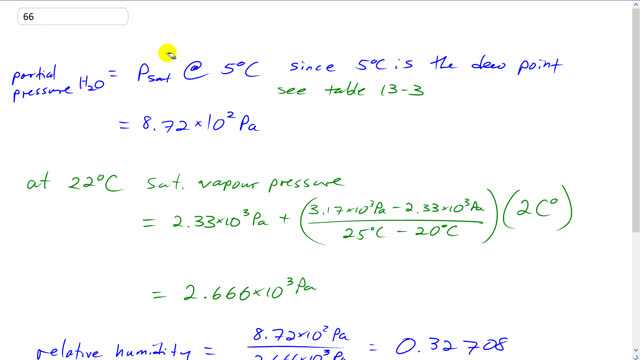
Air that is at its dew point of is drawn into a building where it is heated to . What will be the relative humidity at this temperature? Assume constant pressure of 1.0 atm. Take into account the expansion of the air.

In order to watch this solution you need to have a subscription.
This is Giancoli Answers with Mr. Dychko. The partial pressure of water at 5 degrees Celsius is going to be the saturated vapor pressure because we're told that this is the dew point. And we can read that saturated vapor pressure from table 13-3 and it's 8.72 times 10 to the 2 pascals. At 22 degrees Celsius there's going to be a new saturated vapor pressure but it'll have the same partial pressure because we're told to assume constant pressure inside and outside the room. So, we have to interpolate this, whatever the saturated vapor pressure is because there is no 22 degrees Celsius entry in our table 13-3. So, we we take a point that we know which is at 20 degrees Celsius, 2.33 times 10 to 30 pascals, figure out the rate of change of pressure with respect to temperature and the multiply by the 2 degrees that were, we're exceeding 20 degrees by. So, the temperature of 22 degrees, so 2 degrees above the 2.33 times 10 to the 3 pascal entry that we know. So, this is the number, this is the number of pascals at 25 degrees Celsius and minus the number of pascals at 20 degree Celsius divided by the difference in temperature, there are 25 minus 20, times by 2 degrees Celsius. And we get a saturated vapor pressure at 22 degrees of 2.666 times 10 to the 3 pascals. So, relative humidity is the partial pressure divided by the saturated vapor pressure. And that gives about 33%.